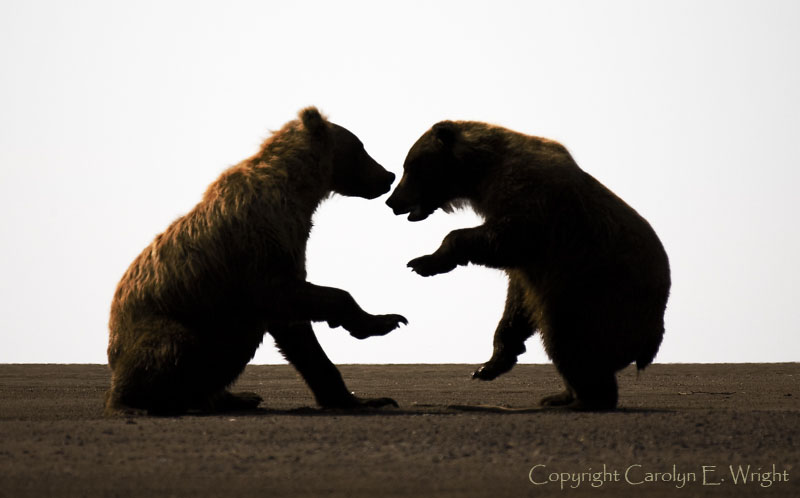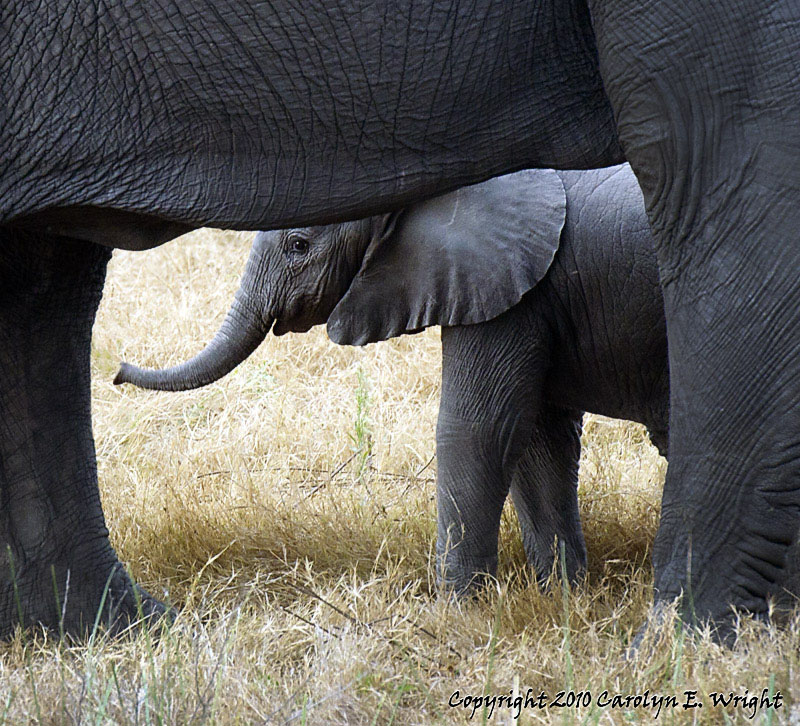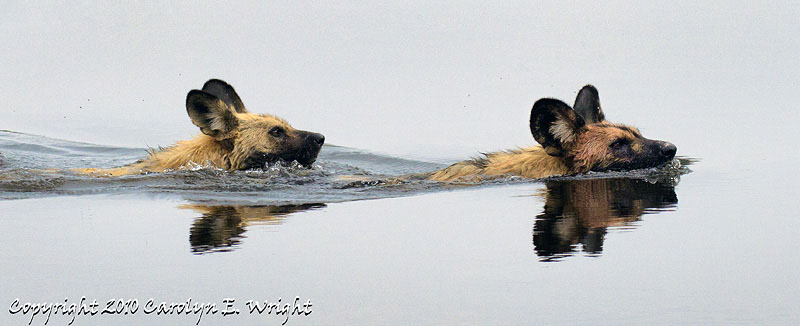The Nature, Wildlife and Pet Photography Forum Presents:
An Interview with Carolyn E. Wright - Photo Attorney  JM: Can you tell us a little bit about yourself?
JM: Can you tell us a little bit about yourself?CW: I’m a full-time attorney whose practice is directed to the legal needs of photographers, including copyright infringement, copyright registration, contracts and licensing, and rights of privacy/rights of publicity issues. My website is at
www.photoattorney.com, which includes a blog with more than six years of blog entries about the legal issues for photographers. I’ve been in law practice for almost 20 years. Prior to going to law school, I spent five years in various business positions, such as cost accounting and management information systems.
I’ve been a photographer since I was a kid, shooting for the junior and senior high school newspapers. I then started shooting nature. Wildlife and animals remain my favorite subjects. I lead wildlife photography workshops and I’m affiliated with Picade for my licensing. Professionally, I’ve shot commercial work, weddings and portraits. My diverse photography experience allows me to help photographers of all kinds.
JM: Where did you get your degrees?CW: My law degree is from Emory University in Atlanta, GA, and I have an MBA with emphasis in management and financial accounting and a B.S. in music from Tennessee Technological University.
 JM: How did you come to specialize in photographic issues?
JM: How did you come to specialize in photographic issues?CW: I’ve always had a desire to help artists/musicians protect their work. So I concentrated my MBA and legal studies on the areas that most affect creative persons. As an active photographer, I personally became aware of the increasing challenges presented with the digital/Internet age. When a colleague noticed that few attorneys understood the special needs of photographers, the idea of “Photo Attorney” was born.
JM: What kinds of people hire you to work on their legal photographic issues?CW: Our clients range from the hobbyist shooter who may share images via Flickr and get infringed, to the photographer who is just getting into the business and needs consultation with setting up a business, to the full-time photographer who needs help with contracts or disputes.
 JM: What do you feel are the 3 biggest legal concerns that photographers have today?
JM: What do you feel are the 3 biggest legal concerns that photographers have today?CW: 1. Copyright infringement – technological advancements have made it extremely easy to steal photos. 2. Getting paid for infringements – because statutory damages for infringements are available only to those who register their copyrights with the U.S. Copyright Office and because it’s expensive to prosecute your claims in court, most photographers have difficulty getting appropriately paid for being infringed (of course, we try to help with that process). 3. Contract Requirements - contracts are vitally important when clients now are more apt to not honor their commitments.
JM: Can you please define 'statutory damage?'CW: When a photo is not registered with the US Copyright Office prior to an infringement (or within three months of the first publication of the photo), a copyright owner may recover only "actual damages" for the infringement (pursuant to 17 U.S.C. 504 (b)), instead of "statutory damages." Courts usually calculate actual damages based on your normal license fees and/or standard licensing fees plus profits derived from the infringement, if not too speculative. One source for standard license fees is a software program called Fotoquote.
If the timing of your copyright registration is proper, you may elect to seek statutory damages instead of the actual profits of the infringer. Statutory fees can range from $750 to $30,000 per infringement (the range for the statutory fees is what the court believes is necessary to deter the infringer from future infringe¬ments), and up to $150,000 with attorney’s fees if the infringement was willful or intentional. Statutory fees usually amount to much more than actual profits.
What is “proper” timing for registration? At a minimum, it should be any time before the infringement occurs. Your registration is effective the day it is received by the U.S. Copyright Office, so be sure to send your registration materials via a documented delivery method. You also are eligible for statutory fees as long as you register your copyright within three months of it being published. If your photo is infringed even one day after it is published but your registration reaches the U.S. Copyright Office three-months-minus-one-day later, you will be protected. Basically, the three months is a grace period that may allow photographers to get their ducks in a row.
 JM: What are options for reclamation of lost funds due to infringement of copyright?
JM: What are options for reclamation of lost funds due to infringement of copyright?CW: I wrote an article about this that your forum members may be interested in. They can go to my article at
http://www.photoattorney.com/?p=515 for what options you have when you have been infringed.
JM: One discussion that we have had extensively on the forum is as to when releases are required - particularly as related to pet photography. Can you tell us when they are required?CW: No law or statute requires “model” or “property” releases to photograph or to use the photograph of someone’s pet. Unfortunately, some attorneys and photographers have suggested that releases are needed for pets, creating a circular argument that you must have them and scaring stock agencies into insisting on them.
 JM: Can we talk a bit about how we can guarantee "exclusivity" at shows.
JM: Can we talk a bit about how we can guarantee "exclusivity" at shows.CW: Basically, what can we do about it when someone crashes the party? I know the club can ask them to leave as in most cases the events are on private property. Besides that, what can we, the photographers, do to combat poachers?
The show sponsor likely is breaching the contract if it doesn’t prevent other photographers from shooting when you have exclusive rights. Accordingly, you can ask for damages or stop shooting (if it is so provided in your contract). Unfortunately, this can create a conflict with your client, which may hurt your business. Instead, try to get the sponsor in advance of the show to understand the importance of enforcing your exclusivity clause and to stop other photographers before it becomes an issue.
 JM: Another discussion we have had here at NWP has also had to do with how to document copyright in a photo that we publish. This may seem like a basic question, but is there any proper way to document that you consider the image as copyrighted when you post it on-line?
JM: Another discussion we have had here at NWP has also had to do with how to document copyright in a photo that we publish. This may seem like a basic question, but is there any proper way to document that you consider the image as copyrighted when you post it on-line?CW: You’ll often see a copyright “notice”—the familiar © or the word “copyright” with a date and name of the copyright owner—posted on creative works. A proper notice has three parts: the first part is the © (the letter “c” in a circle), the word “Copyright,” or its abbreviation, “Copr.” Some people use a “c” within parenthe¬ses like this: (c), but it has not been designated as part of the official copyright notice. The second part notes the year when the work was first published (not created). The third required part of a copyright notice is the name of the copyright owner. The final form looks like this: © 2011 Carolyn E. Wright. Including a copyright no¬tice is no longer required for copyright protection, but it is a good idea to use it.
When you use the copyright notice it may stop someone from stealing your photographs, either because it serves as a reminder that the work is protected or because the notice interferes with the use of the work when it is part of the photo. Also, it helps to post a copyright notice on your photos because the infringer then cannot say the use was innocent. You may use the copyright notice without registering your work with the U.S. Copyright Office.
Using the copyright notice or other forms of copyright management information (such as your name or contact information) with your photographs is a great way to combat copyright infringement. Specifically, the act of removal of your copyright management information to hide an infringement, violates Section 1202 of the Copyright Act (also known as part of the Digital Millineum Copyright Act). Your copyright management information “means any of the following information conveyed in connection with copies of a work or displays of a work, including in digital form (such as in the metadata of your photo file):
(1) The title and other information identifying the work, including the information set forth on a notice of copyright.
(2) The name of, and other identifying information about, the author of a work or
(3) The name of, and other identifying information about, the copyright
owner of the work, including the information set forth in a notice of copyright.
You can read more about this DMCA violation at:
http://www.photoattorney.com/?p=163. JM: Can we learn a bit more about the new copyright system for speedily processing our photos?
JM: Can we learn a bit more about the new copyright system for speedily processing our photos?CW: Most photographers understand the importance of registering their photographs. The old way included paper forms and putting copies of your photos on media. But to make the process even easier, the US Copyright Office now offers the opportunity to register your copyrights online and upload your photos from there.
Using the electronic copyright office system (“eCO”), you can register your photographs quickly and with less work. I wrote an article for people who are interested at:
http://www.naturescapes.net/docs/index.php/articles/341. The article includes step-by-step instructions and screen shots of my actual registration of some of my photographs. Registering your copyrights is one of the best ways to protect your work.
JM: Thank you so much for taking time with us to do this article - and for sharing some of your beautiful photographs. If someone wished to hire you, how would they do so? What sort of clients do you take?CW: Photographers may contact us by email at photoattorney (at) gmail (dot) com. We review copyright infringement cases at no charge to let the photographer know how we can help. We are willing to take certain cases on a contingency basis, so that we get paid only if the photographer gets paid. For other work, such as consultation or document drafting, we provide estimates in advance.
Did you like this article? Please share the link! Just a reminder that this article is copyright 2011, The Nature, Wildlife and Pet Photography Forum. The images contained in this article are all the property of Carolyn E. Wright and have been licensed to NWP for the purpose of this article. Reproduction of this article, in whole or in part, in any form or medium without specific written permission is prohibited.
New to the site? Take some time to check out the rest of the site and forum.
http://www.nwpphotoforum.com/ubbthreads/